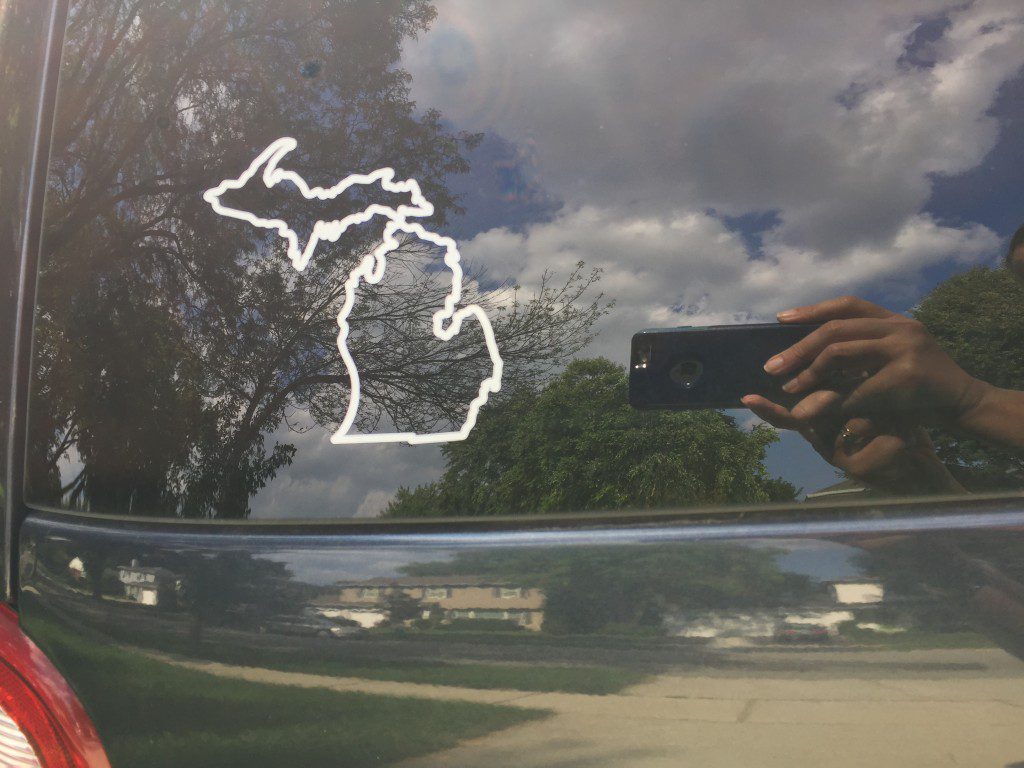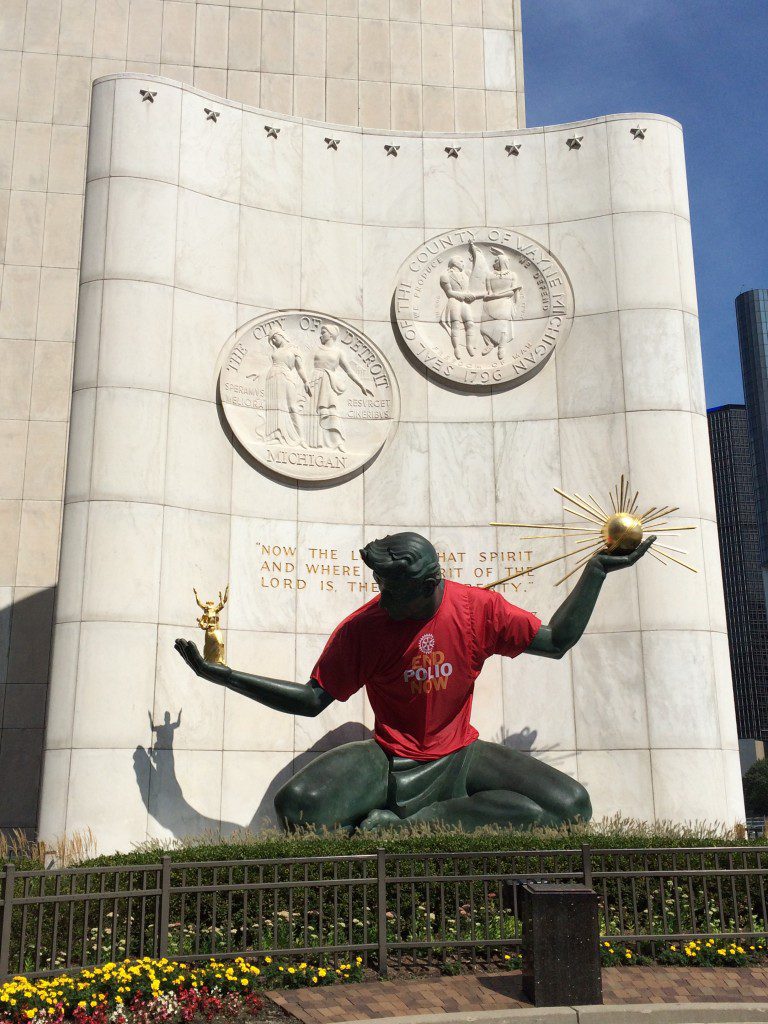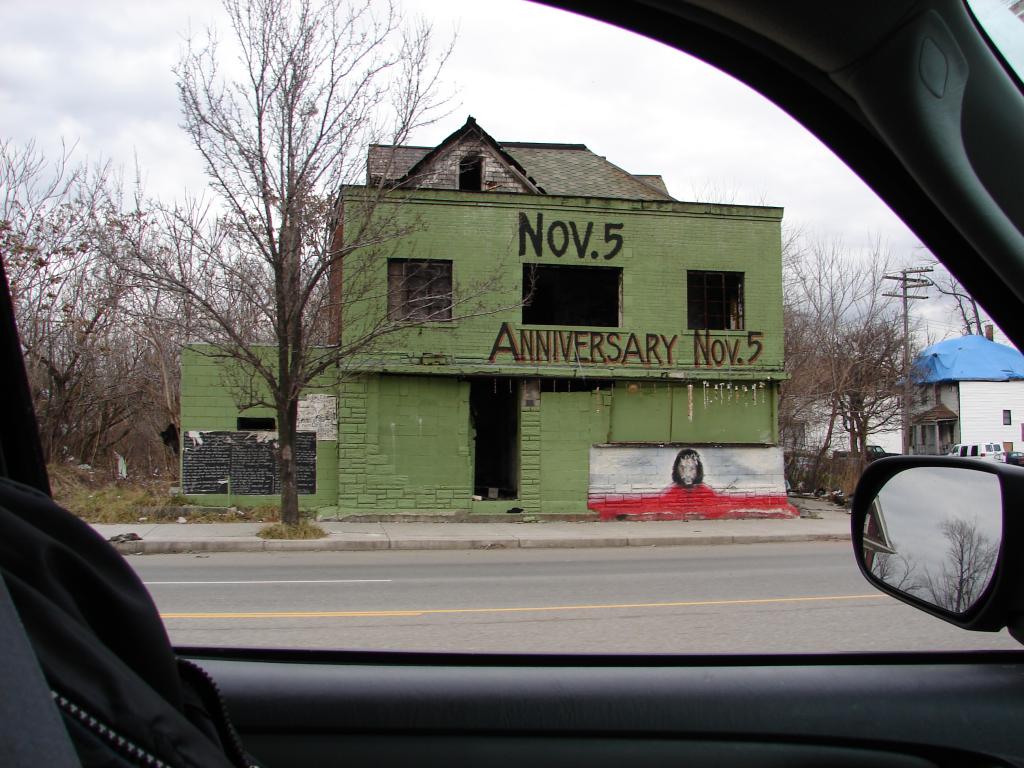
Why am I starting this post off with an image of Michigan as a decal on my car?
This was a purchase on our vacation to Grand Haven two weeks ago. I’d never gotten the standard stick-figure decal for the minivan, so when my husband suggested this instead, I was happy to accept his offer. Yes, I don’t live in Michigan, though we’ve talked about buying a vacation house there. But, more broadly speaking, I’m definitely a Great Lakes kind of girl, especially if you add in Lake St. Clair, where we spent most childhood summer weekends on the boat, as a junior Great Lake.
Michigan. The Mitten. And The D, Detroit. Fine, I didn’t grow up in Detroit itself, but spent the first part of my childhood in Southfield (and still feel a bit of pride for this city as, so far as I know, a pretty rare example of a city which has managed to become integrated, but has stayed strongly middle-class), and the second half in Troy, whose claims to fame are the upscale Somerset Mall (the Somerset North portion of which was our childhood play area, where we rode bikes and caught snakes while the developer fought with the city over development plans) and the long-since abandoned K-Mart building across the street.
The Detroit riot occurred two years before I was born and, consequently, I never knew a Detroit that wasn’t troubled, and yet always proclaiming its renaissance. I have vague memories of going to the Belle Isle zoo, back when it existed, or going to the Greek Festival downtown when Ya-Ya and Papou were visiting, and we seem to have gone to the Detroit Historical Museum once, and the Detroit Auto Show, but mostly we lived in the suburbs and the city was pretty remote from our lives, only mattering in the news reports.
And Mayor Coleman Young was a fixture of my childhood, as the mayor from 1974 to 1994. Famously, he told crooks to “hit 8 Mile” when he took office, and that set the stage for a city/suburb (and black/white) antagonism that continued throughout his time in office, and in fact was the hallmark of his administration, and the main reason he continued to be re-elected. They didn’t like us, we didn’t like them — or, rather, the way I understood it growing up was simply that as long as Detroiters kept electing Coleman Young, suburbanites would continue to live their lives as if the city of Detroit didn’t exist. There was very little to draw suburbanites in: the Pistons and the Lions were in the suburbs, as well as major concert venues, and there was certainly no need to go into the city for nightlife or shopping; it was instead Detroiters who came out to the suburbs, what with the lack of any sort of major department store in the city — emblematic of the city’s decline, the flagship Hudson’s in downtown Detroit was closed in 1983 and demolished in 1998. (Perhaps in the meantime, with the latest round of revival claims and development in the midtown area, there is again more retail; I don’t know.)
Now Detroit is really trying to get back to, well, being a place that’s no longer a synonym for hellhole. And civic leaders are trying really really hard to bring city and suburbs together in partnership like a normal city would. Heck, residents of suburban Detroit even agreed to tax themselves to support the Detroit Institute of Arts, with the result that admission for residents of these counties is free.
But now Kathryn Bigelow has made a film about the Detroit Riot, in which, from all reports (not just National Review‘s critique but also the Chicago Tribune’s 2.5 star review) she produces a familiar cast of white police Bad Guys and black civilian Bad Guys; Bigelow, the National Review says, wants to revisit the riots from a Black Lives Matter perspective. The movie’s advertising tagline is “it’s time we knew” as if there was a great cover-up. She’s an outsider, a Californian, she has no connection to Detroit so far as I know, doesn’t care about the city in any way except for as a suitable setting for her film and a way to make money. (Yes, she’s getting some grief from liberals for being a white person telling the story of black people; I don’t remotely care about that, though.)
To be sure, it’s the sort of violence-filled movie that I’m not usually drawn to anyway, but I was curious due to the subject matter — and the setting. And in a movie where the violence is important for the plot, and the plot is a meaningful one, it can be worth it to sit through that violence. But I don’t see what this movie contributes. Yes, there was police violence, brutality, plenty of it, I’m sure. But not all Things That Happened need to have movies made about them.
And, now, just to close out the post, some pictures of the “good parts” of Detroit taken on a trip to visit the folks a couple years ago.


















